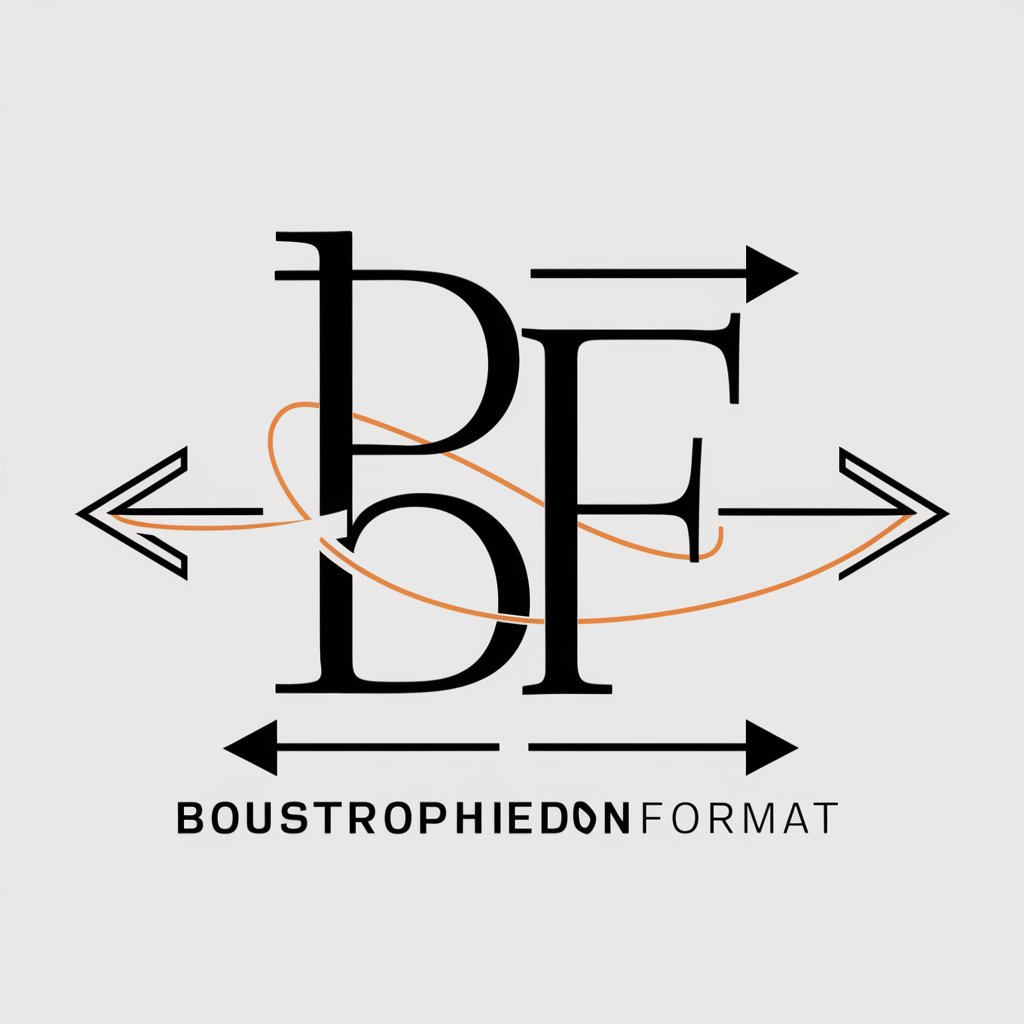5 GPTs for Text Manipulation Powered by AI for Free of 2025
AI GPTs for Text Manipulation encompass a suite of advanced tools powered by Generative Pre-trained Transformers, designed to handle a wide range of tasks involving text generation, editing, summarization, translation, and more. These tools leverage the capabilities of GPT models to understand and manipulate language, making them highly relevant for applications that require nuanced text handling. By utilizing machine learning and natural language processing technologies, AI GPTs for Text Manipulation offer tailored solutions that can adapt to the specific needs of various text-based tasks, ensuring high-quality outcomes that mimic human-like understanding and creativity.
Top 5 GPTs for Text Manipulation are: InDesign Script Assistant,Dify Code Block Maker,RegEx Generator,boustrophedonFORMAT,Text Reverser
InDesign Script Assistant
Automate InDesign with AI Precision

Dify Code Block Maker
AI-powered Python code generation tool.

RegEx Generator
Craft precise regex patterns effortlessly.

boustrophedonFORMAT
Revive ancient scripts with AI.

Text Reverser
Reverse your text, reveal new perspectives!

Essential Capabilities of Text Manipulation Tools
AI GPTs for Text Manipulation are distinguished by their versatility and adaptability, capable of performing a broad spectrum of text-related tasks. Core features include advanced language comprehension and generation, context-aware editing, summarization capabilities, and the ability to translate between languages. Special features extend to learning from interactions, providing technical support, conducting web searches, generating images from text descriptions, and analyzing complex data sets. These tools can dynamically adjust their responses and functions based on the input, making them powerful assets for a wide range of text manipulation tasks.
Who Benefits from Text Manipulation AI
AI GPTs for Text Manipulation cater to a diverse audience, including novices seeking to leverage AI for personal projects, developers integrating advanced text handling capabilities into applications, and professionals in fields such as marketing, journalism, and academia. These tools are designed to be accessible to users without programming skills, offering intuitive interfaces, while also providing extensive customization options for those with technical expertise.
Try Our other AI GPTs tools for Free
Arduino Learning
Discover AI GPTs for Arduino Learning: tailor-made AI tools designed to enhance your Arduino projects and learning experience. From beginners to pros, unlock a world of possibilities with personalized guidance, project support, and innovative solutions.
IoT Education
Explore AI GPTs for IoT Education: Tailored learning experiences designed to simplify and enhance your understanding of the Internet of Things (IoT), suitable for all skill levels.
Intellectual Challenge
Explore AI GPTs for Intellectual Challenge, advanced tools designed to enhance and support complex cognitive tasks with AI-driven insights and solutions.
Virtual Identity
Discover the power of AI GPTs for Virtual Identity: transforming digital interactions with lifelike conversations, personalized avatars, and enhanced user experiences.
Educational Quizzing
Explore how AI GPTs for Educational Quizzing revolutionize learning with personalized quizzes, instant feedback, and adaptive educational content, accessible to all.
Quiz Customization
Explore AI GPTs for Quiz Customization: versatile tools designed to create engaging, personalized quizzes for education, engagement, and assessment.
Further Perspectives on Text Manipulation AI
AI GPTs for Text Manipulation are transforming how we interact with text, offering customized solutions across various sectors. Their user-friendly interfaces make advanced text manipulation accessible to a broader audience, while integration capabilities allow for seamless adoption into existing digital ecosystems. As these tools continue to evolve, they are set to revolutionize the efficiency and creativity of text-based processes.
Frequently Asked Questions
What exactly can AI GPTs for Text Manipulation do?
They can generate, edit, summarize, and translate text, among other tasks, adapting to the context and content requirements.
Do I need coding skills to use these tools?
No, many tools are designed with user-friendly interfaces that do not require programming knowledge for basic operations.
How do these tools adapt to different text manipulation tasks?
They utilize advanced machine learning algorithms to understand context and objectives, dynamically adjusting their functions accordingly.
Can these tools be integrated into existing systems?
Yes, many AI GPTs offer APIs and other integration options for embedding their capabilities into existing workflows and systems.
Are there customization options for developers?
Yes, developers can access a range of customization options and advanced settings to tailor the tools to specific needs.
How do these tools ensure the quality of text output?
Through continuous learning from vast datasets and feedback, these tools refine their language models to produce high-quality, contextually appropriate text.
Can AI GPTs for Text Manipulation generate images from text?
Yes, some tools are equipped with the capability to generate images based on descriptive text inputs, extending their utility beyond text manipulation.
What makes AI GPTs for Text Manipulation unique compared to other AI tools?
Their deep understanding of language nuances, ability to adapt to a wide range of tasks, and the integration of additional features like image generation and data analysis set them apart.